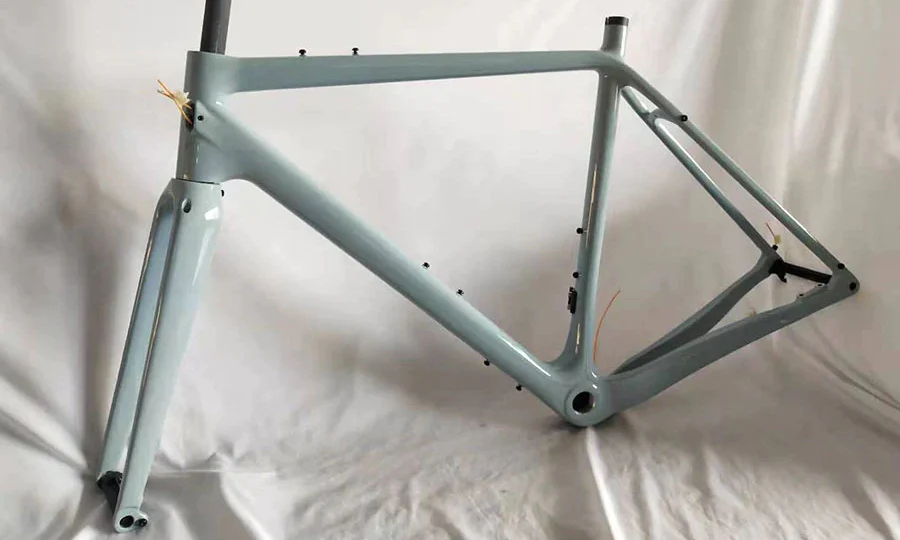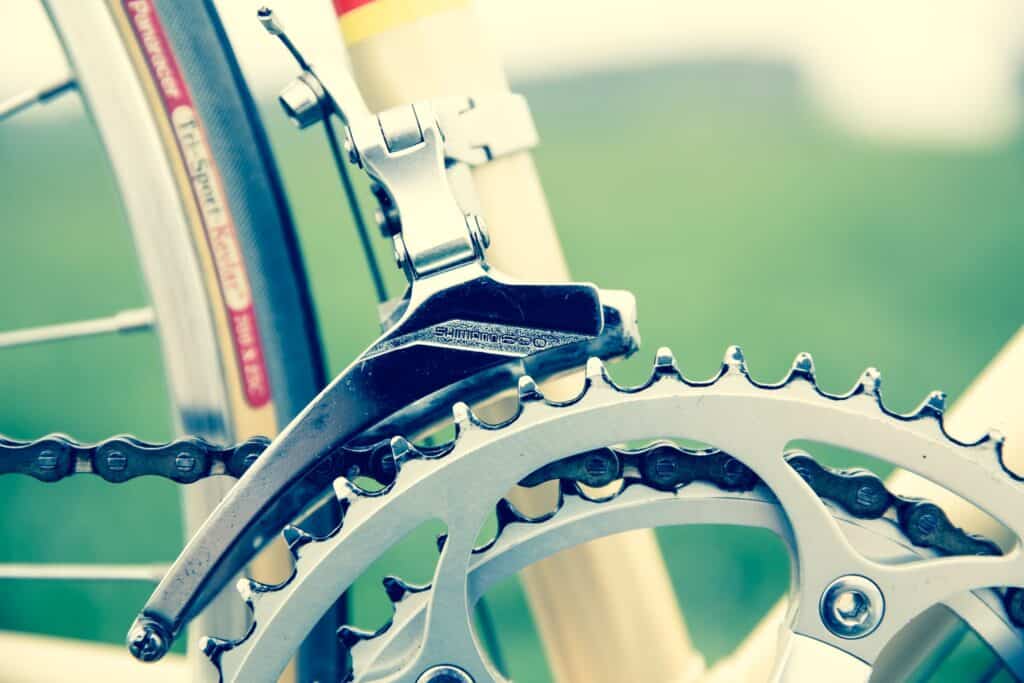Are you wondering how long a bike will last before you make the investment and take the plunge? Whether you are a novice or an avid biker, questioning a bike’s lifespan is fair and just. It is natural and important for you to figure out how long the new bike you are planning to buy will last.
When I bought my first bike, I was especially concerned about its lifespan because I knew I was going to commute with it on a regular basis. If you plan on doing the same, it is essential for you to have an idea about your bike’s lifespan and how different factors could affect it.
Bikesolved.com is readers supported, you may find Amazon affiliated links on this page, that pays us commission for recommending products at no extra cost to you.
How Long Does A Bike Last?
Your bike is a collection of different components that have lifespans of their own. From the quality of your bike to the conditions you use it in, there are a variety of factors that can affect its lifespan.
If the quality of your bike is not satisfactory and the components are cheap, it will not be able to withstand daily use and can also prove to be dangerous.
Frame
The lifespan of your bike’s frame will depend upon its type, material, and build quality it possesses. If proper care and bike maintenance are ensured, carbon and steel bike frames last pretty long, even forever.
Aluminum bike frames, on the other hand, are susceptible to damage in the long run as they accumulate fatigue. Let’s understand more about how long bike frames last, depending on their material.
Carbon Frames
Although carbon frames are likely to get damaged in accidents, they have the ability to last for as long as a lifetime. Carbon fiber frames are expensive, slightly more brittle than steel or aluminum frames, and possess high-tensile strength.
Manufacturing defects, UV light, and accidents may prove to be undesirable for carbon fiber frames. But if constructed properly without flaws and painted using UV-resistant paint, your carbon frame can last a lifetime.
Aluminum Frames
Being affordable and lightweight, aluminum is the most commonly used bike frame. A good-quality aluminum frame can withstand more than 30 years of usage if it is protected against dents. However, its longevity could vary because aluminum frames tend to accumulate fatigue as you continue using them.
Every time you give it a slight dent, you are giving it cumulative damage, which will affect the entire frame and require you to inspect it on a regular basis for your safety. Even if your aluminum frame does not break down, you may be required to replace it over time.
Steel Frames
Steel frames tend to be much heavier than aluminum or carbon fiber frames, but their durability remains unmatched. Even with years of use and substantial knocks, their strength and quality will remain intact.
Although aggressive riding and poor build quality can break a steel frame, a well-constructed steel frame will be able to last a lifetime. Since steel is susceptible to corrosion, it is essential for you to treat a steel frame properly.
Components
Replacing the components of your bike on a regular basis will definitely give a boost to its longevity.
Chains
Over time and constant use, bike chains tend to stretch and require replacements. Worn-out bike chains can cause damage to other components of your bike, which is why you should replace them. Their lifespan can range somewhere around 1000-2000 miles.
Cassettes And Chainrings
Cassettes and chainrings can last anywhere between 2,000 and 5,000 miles. However, it is recommended to replace your cassette every time you replace your bike chain. A lot of performance riders do the same.
Break Pads
The longevity of your brake pads usually depends upon the type of brakes fitted to your bike, the material of the pads, your braking preferences, and other factors. They can last anywhere between 1500 and 2500 miles. It is essential to check the efficiency of your brake pads before riding to ensure your safety.
Tires
The life expectancy of the tires of your bike can vary. Generally, your tires can last anything between 1000 and 2500 miles if you use your bike on a regular basis. They may last a little longer if they are puncture-resistant. Exposing them to heat, extremely cold conditions, and UV light can degrade their quality over time.
Inner Tubes
In storage, inner tubes can have a lifespan of more than a decade. In use, their exact longevity is indefinite.
Bearings
The quality of bearings and operating conditions play a huge role in determining their life expectancy. Therefore, their lifespan is indefinite as it is influenced by various factors.
Which Bike Lasts Longer?
Mountain Bikes
- Purpose: Mountain biking, trekking.
- Terrain: Mostly rough, but can also be driven on the road for daily commuting.
- Average Lifespan: 20 years
Mountain bikes are designed to withstand rough and rugged terrains. Although the life expectancy of a mountain bike depends upon your riding conditions and the regularity of rides, it is expected to last for over 20 years with proper care and maintenance.
Bike components like drivetrains, chains, and tires are some of those which will wear out over time and constant use. Since the purpose of mountain bikes is to withstand rough trails, they are equipped with durable components.
Road Bikes
- Purpose: Road biking, commuting
- Terrain: paved surfaces and smooth city roads
- Average Lifespan: 5-10 years
Road bikes are designed to tackle pavements and smooth city roads. They can last anywhere between 5 to 10 years, depending upon their frame materials, provided that you use them according to their purpose and capabilities. Riding a road bike on unpaved surfaces or rugged terrains will definitely decrease its longevity.
BMX Bikes
- Purpose: off-road and stunt riding, racing
- Terrain: rugged, off-road trails
- Average Lifespan: 2-6 years
BMX bikes are designed for off-road riding that involves performing tricks, racing, and stunt riding. A BMX bike is expected to last for 2-6 years. You can increase its longevity with proper maintenance that involves replacing worn-out parts on time.
Electric Bikes
- Purpose: Electric assistance and faster commutes
- Terrain: Off-road and paved roads
- Average Lifespan: As long as a regular bike
With proper maintenance, you can make your electric bike last as long as any other bicycle. However, if you do not protect your bike from rainfall, it will probably not last you longer than 10 years. You may also need to replace components like the battery, brake pads, and chain.
Out of all these types of bikes, mountain bikes have a longer life expectancy as they can last for over 20 years with proper care and regular maintenance. Mountain bikes are equipped with sturdy and durable componentry to tackle rugged terrains.
Since they are designed to endure substantial knocks, they can last much longer than all the other types of bikes, provided that they are maintained properly, and worn-out parts are replaced on time.
What Factors Can Affect Bike Lifespan?
Build Quality
A high-quality and decent bike that is well-manufactured will last you much longer than an inexpensive bike with mediocre componentry. The quality of bike parts, frame material, and components influences the overall build quality of your bike, thus affecting its lifespan.
Maintenance
The regularity of maintenance you ensure for your bike can affect its lifespan. A well-maintained bike will perform much better and last much longer than a bike which is often neglected when it comes to maintenance.
Type Of Bike
The type of bike you pick can affect its longevity. A mountain bike can have a longer lifespan compared to a roughly-used road bike as it is designed with durable components to take substantial knocks and handle rugged terrains.
Travel Distance
How many miles you ride and the regularity with which you use your bike can affect its lifespan. With constant use, some components may wear out.
Tips To Maintain Bikes Lifespan
Lubrication
Regularly lubricating and cleaning the bike chain is essential, as a lack of lubrication may lead to your bike chain wearing out. By investing just a few minutes, you can make your bike last longer. Regular maintenance of your bike is essential to increase its lifespan.
Replacing Worn-out Parts
Your bike will work less efficiently with worn-out componentry and eventually cause more damage to its lifespan. Therefore, you must inspect parts like chains and brake pads to check for any damage. If any of the components are worn out, you should replace them immediately to avoid further damage and boost the lifespan of your bike.
Storage
You should store your bike in a sheltered place to protect it against rain or snow. Proper storage and lack of exposure will definitely help you maintain the lifespan of your bike.
Cleaning
Accumulation of dirt and grime can cause damage to the components of your bike. Therefore, regular cleaning is essential to get rid of such dust and boost the longevity of your bike. You can even choose to service your bike on a regular basis to keep it well-maintained and clean.
Conclusion
It is evident that your bike cannot last forever. Over time and constant use, you will have to replace worn-out parts. However, with care and regular maintenance, you can definitely give a boost to your bike’s longevity. The lifespan of your bike is influenced by various factors.
Build quality, frame material, the type of bike you own, and the regularity with which you use it can affect its lifespan. With proper maintenance, storage facilities, inspection, and replacement of worn-out components, you can easily maintain and increase the lifespan of your bike.












